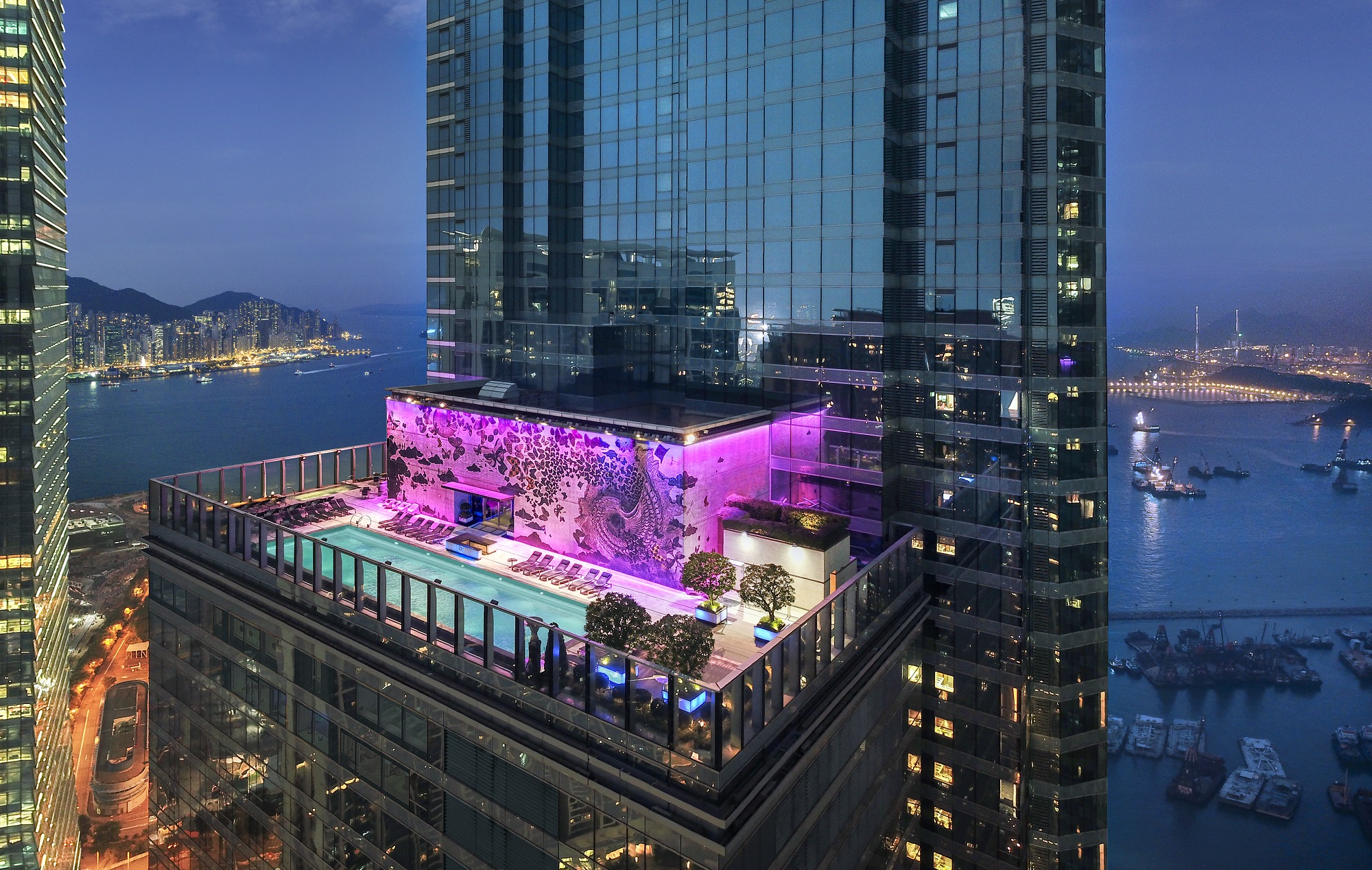As Roganic Hong Kong celebrates a five-year milestone, Simon Rogan, the acclaimed British chef behind it, looks back with Stephenie Gee at the journey
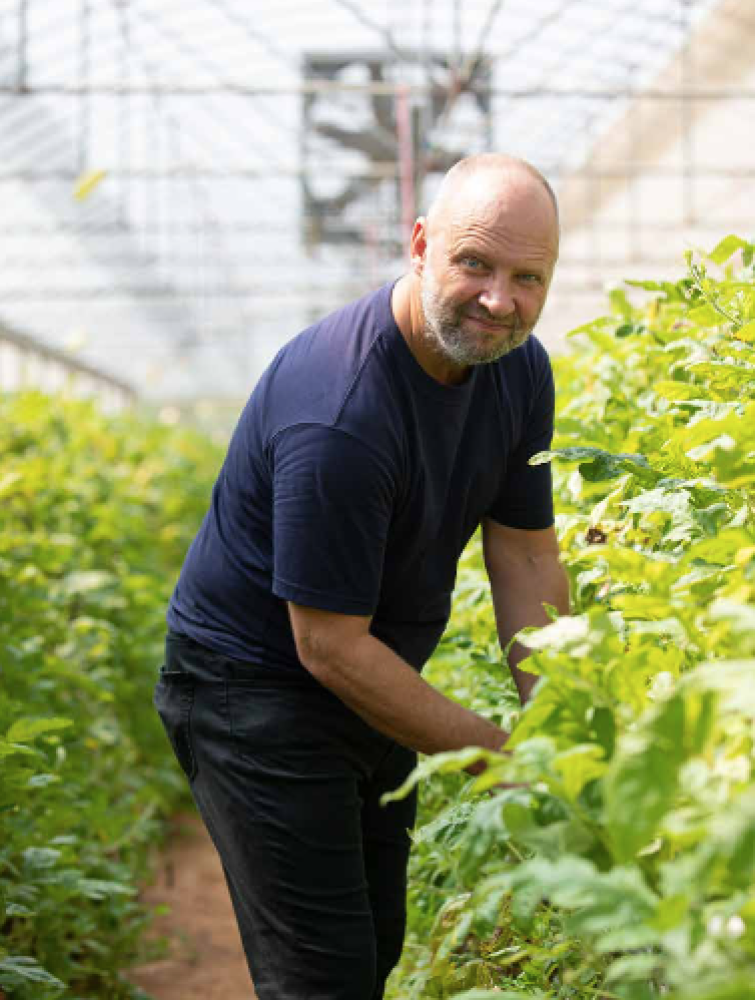
The Hong Kong dining scene was very different five years ago, when Simon Rogan opened the doors to Roganic Hong Kong, the follow-up to his celebrated, now-shuttered hot spot in London’s Marylebone. For one thing, there was no Roganic, which may seem like an obvious fact to point out, except that Rogan’s sustainability-forward, produce- driven temple broke new ground in the city. Like all other Rogan establishments, which span the globe from the UK to Malta and Phuket to Hong Kong, Roganic remains ever faithful to his farm-to-fork ethos, but with a city- centric twist, swapping British-grown ingredients for local, seasonal produce. Après Rogan, le déluge. Many chefs have flooded into the farm-to-fork movement in the years since, but Rogan was among the first chefs to stake out the territory and define it for everyone else.
At first, though, the crowds were sceptical. “Very sceptical, yes,” Rogan, a recent recipient of the MBE for services to the food industry, affirms with a laugh. “We were thinking about concepts and what we were actually going to do in Hong Kong, and we came to the conclusion to unashamedly do what we do because there wasn’t anything else like it in Hong Kong. You know, keep it British. Well, what is British food? I don’t even know what British food is. Just ingredients cooked by a British chef, I suppose that’s British food. But we thought, ‘Let’s keep it the same. Let’s go and look where our ingredients are going to come from.’ And I think the reason why, humbly, Roganic is so popular and so loved, is because we embraced the city and what it can offer.”
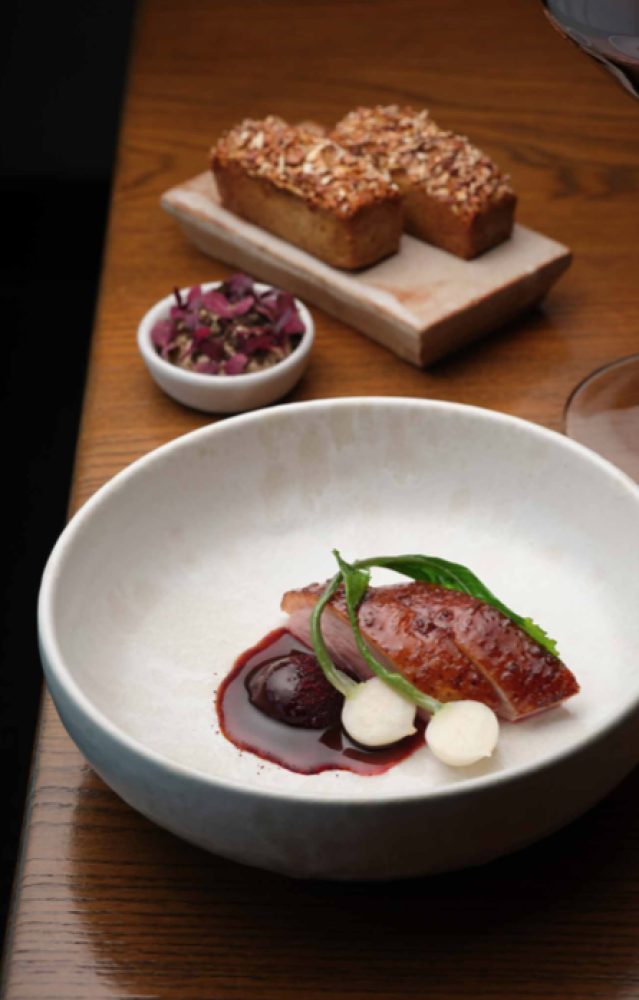
With help from connections on the ground, Rogan forged deep alliances with a small network of growers around the New Territories and the borders, securing a glut of greens and roots like cabbage and beetroot. Today, that network has grown to include New Age Organic Farm and Zen Organic Farm for gourmet vegetables, Wah Kee Farm for free-range pigs, Peter’s Seafood for fresh local seafood, Yi O Rice Farm for prized organic rice, and Common Farms for herbs and edible flowers. “Obviously, we started importing stuff until we found that little network of people to work with. But it was pretty remarkable, actually. I really was pleasantly surprised about what we could get right in the beginning,” he says. “I think the adage is if you’re really passionate and determined, you will generally find what you’re looking for. Unless you’re in the middle of the desert, I would say.”
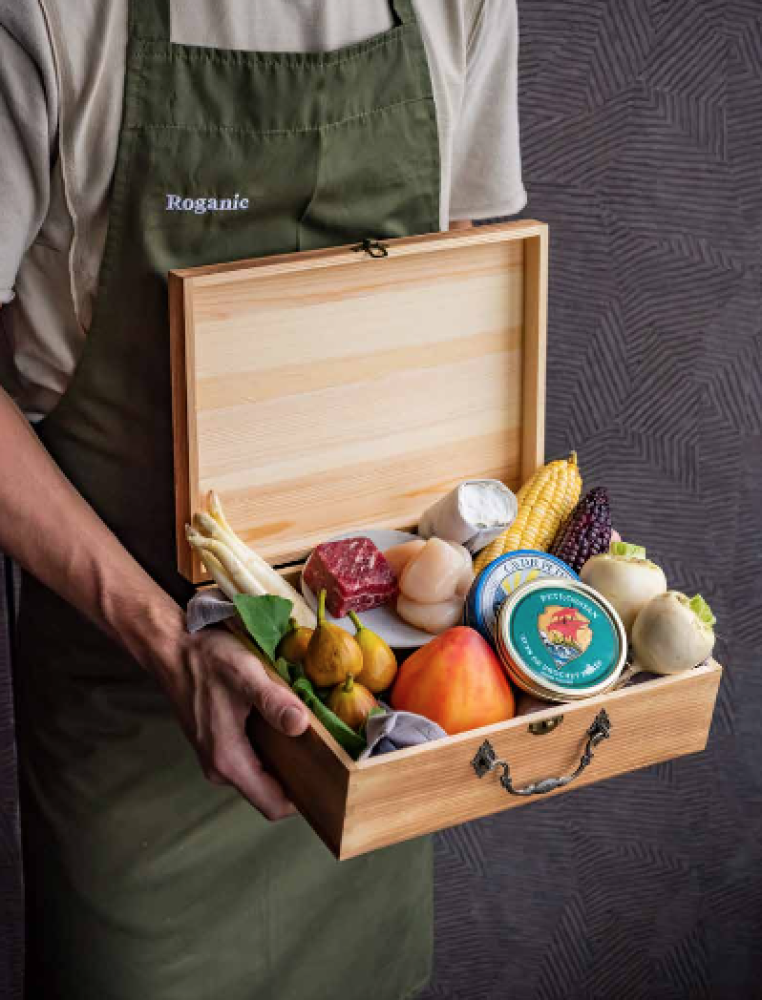
Rogan’s understanding of sustainability is nuanced and, at Roganic, approached in manifold ways. Aside from responsible sourcing, on-site Evogro cabinets allow the team to grow their own microgreens – for a guarantee of optimal flavour because microgreens don’t travel well. Bottled water is replaced with Nordaq filtered water, as part of a commitment to reducing their carbon footprint and single-use plastic consumption. And the team makes every endeavour to use the entirety of their ingredients – be it animal or mineral. Coffee grounds are upcycled into compost, for example. Vegetable trimmings are puréed or brewed into tea. And bones are reduced to a jus. Take the seasonal duck main course: a stalwart crowd-pleaser, whole duck, from Hop Wo Ho poultry, is aged in-house for 14 days; glazed in a local 100-flower honey; paired, in this season’s iteration of the dish, with young moon glow carrots; and finished in a sauce made with the duck wings and infused with mountain marigold vinegar. The remainder of the bird is blended into a butter, served with the signature soda bread.
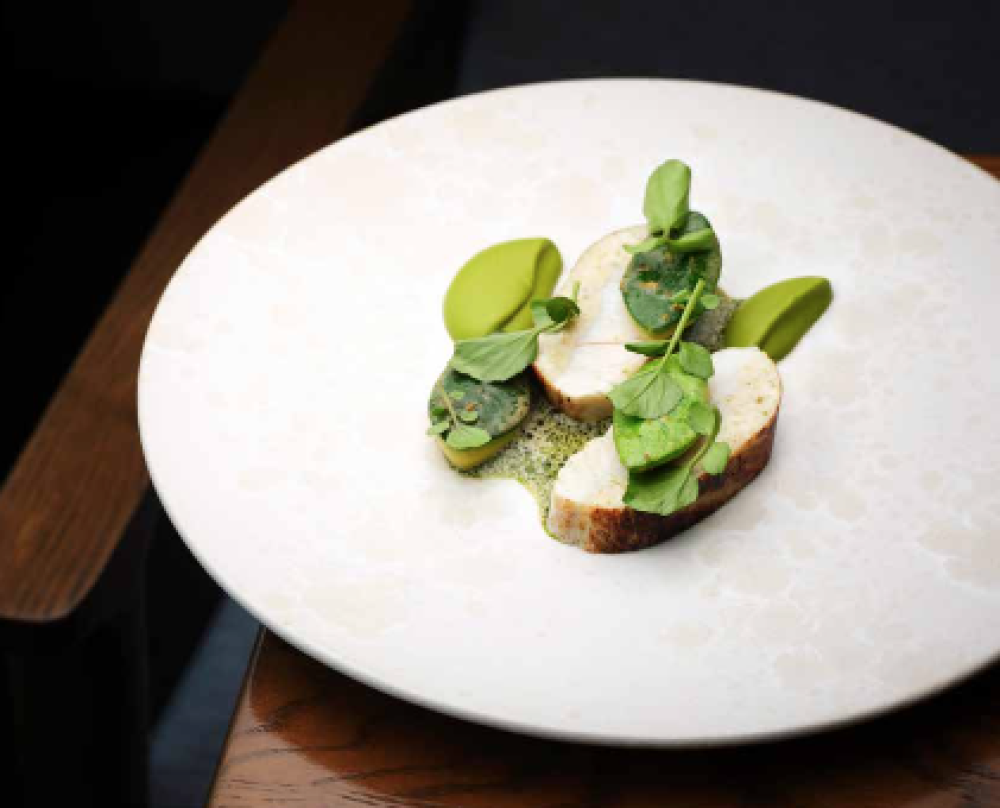
“I’ve always had a real passion for ingredients,” Rogan tells me. “When I was growing up, my dad was a fruit and vegetable salesman, and one of the perks of his job was to come home with bags of fruit and vegetables. A lot of the stuff, I didn’t know what it was, and that really started off the inquisitive nature in me as a cook – to find out what they were, what you could do with them and how they could be utilised without throwing them in the bin,” he says. “Then, when I started my career, I worked in a hotel in the middle of nowhere in a place called the New Forest in the south of England. We used to work split shifts and so in the afternoons we would go out foraging for wild mushrooms and wild herbs and stuff like that. So I developed these two interests quite early on.”
Also see: Michelin Guide 2024: The stars unveiled
It wasn’t until 2002 that it fully manifested. Rogan – a native of Britain’s southern coast whose first job as a teenager was at a casual Greek restaurant in Southampton, and who went on to work for the likes of Marco Pierre White, John Burton-Race and Jean- Christophe Novelli – was determined to start a place of his own after years of disappointment working for others. “I had, I don’t know, maybe three or four jobs that really promised a lot when they started and, hopefully, would give me the platform to really make a name for myself. And it just never quite happened,” he recalls. “Whether that was my fault or their fault, let’s not go into that. But I was always destined to work for myself to achieve the things that I wanted to achieve. Especially in the style that I wanted to do it. I wanted to do it in a very particular way and do something a little bit different. And maybe, I couldn’t quite get someone to share that vision.”
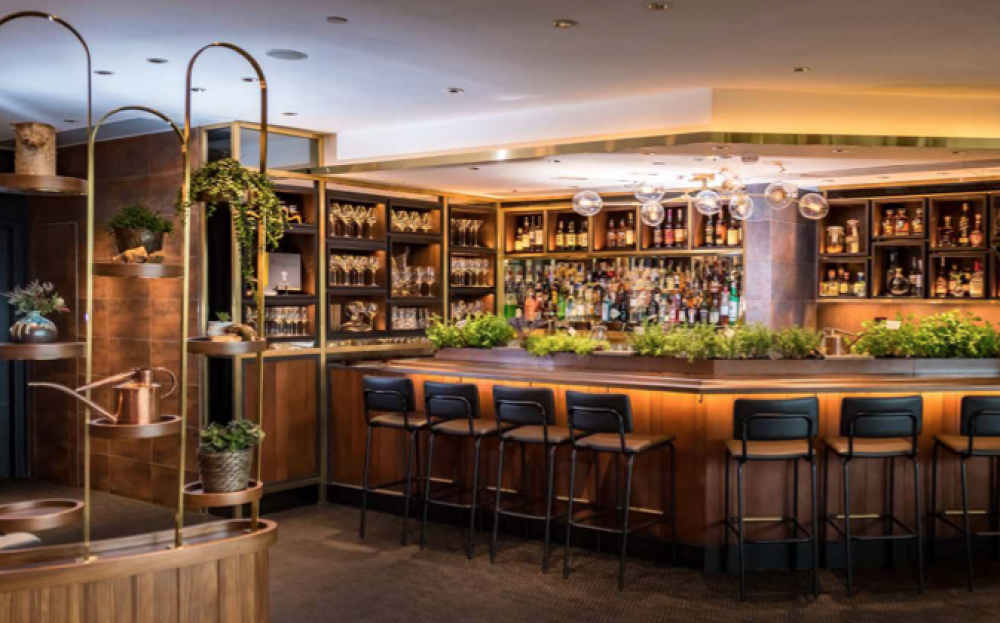
So, he and his wife, Penny, dug into their savings and moved to the small village of Cartmel in Cumbria. Here, Rogan bet everything on the launch of a new destination for modern seasonal cooking, set in a characterful former village forge. He called it L’Enclume (“the anvil” in French), channelling the work of French chef Marc Veyrat – characterised by the avant-garde use of alpine herbs, flowers and roots – that had inspired him originally. Over the next two decades, Rogan went on to transform the Lake District into a culinary destination like no other. It’s now home to not only L’Enclume – awarded the Michelin Green Star in 2021 and the coveted third star the next – but also Aulis Cartmel, the six-seater chef’s table behind it; the one-starred neighbourhood eatery Rogan & Co; and Henrock, a more informal and relaxed offering just a half-hour’s drive away at Linthwaite House, overlooking Lake Windermere.
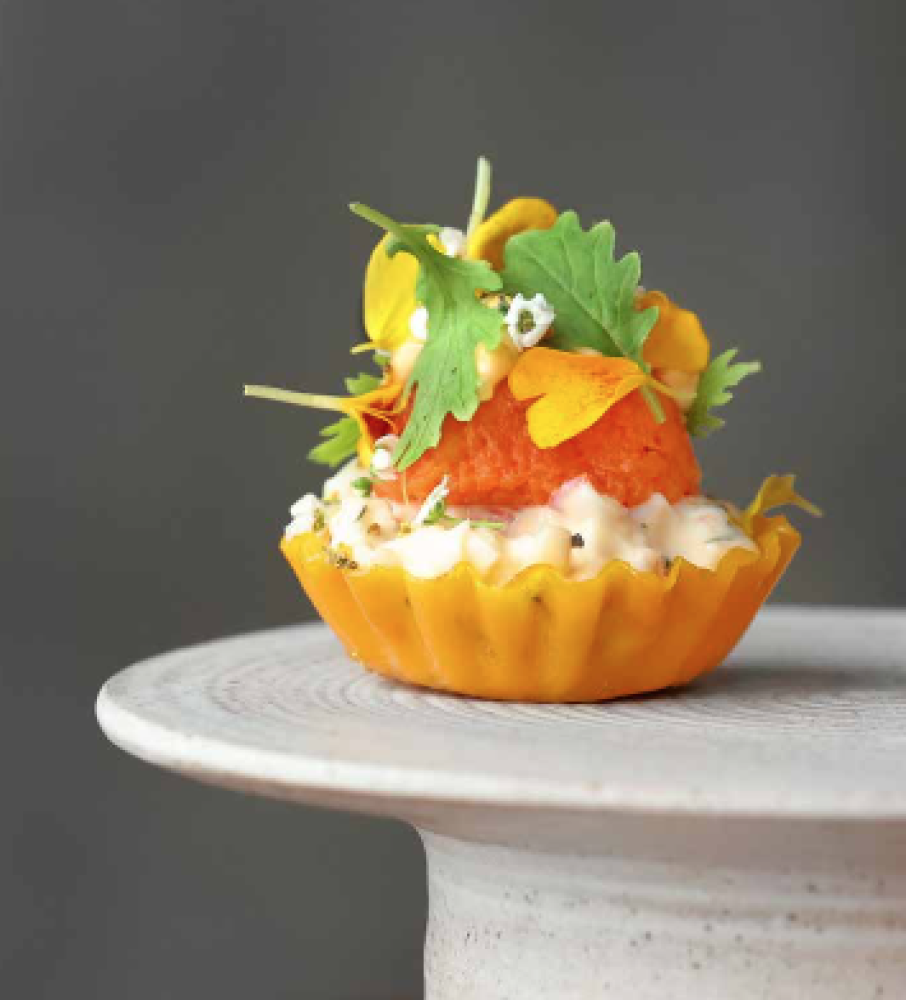
Beyond Cumbria, he also put his name to Aulis London and Roganic, the latter opening in 2011 as a pop- up on Blandford Street offering a pared-back take on his flagship L’Enclume. All are fed by Rogan’s sustainable, closed-loop 12-acre Our Farm in Cartmel Valley, a passion project materialised from a need for good, quality produce. “London swallows up pretty much all of the tourism in the UK. Us in the provinces, we feed on the scraps. Because, you know, London’s a great place, isn’t it? There’s so much to do and so many restaurants and bars and attractions. So, and rightfully so, people visit the capital city. We needed something in London as a shop window for the world – to give them a little bite of what we do in the lakes,” Rogan explains.
The strategy proved successful. L’Enclume gained traction, as did Roganic, which in a happy twist of fate, reopened on the same street five years after closing as a permanent site, winning a Michelin star the same year. “Roganic was a well-liked little restaurant that made a lot of noise,” he continues. “It was so good and a bit of a dump, actually, if I’m being perfectly honest, but it didn’t matter. It was about great food, great service, served in a really quirky sort of environment and people just fell in love with it. It was a massive success and it sort of gave me a bigger name around the world, with all the international tourists that were visiting.”

It’s where he met the couple behind Dining at Murasaki, a Japanese-French omakase restaurant and the former occupant of the Roganic Hong Kong space. “In our restaurants, there seem to be a lot of Asian people frequenting them. I don’t know whether it’s because it’s quite precise and neat and sharp, a bit like Japanese food maybe. It’s very light as well, because we do long tasting menus and we want to get the balance absolutely spot-on so it’s nothing too heavy,” he says. “We had a family from Hong Kong who used to come to all of our restaurants. They were amazing customers and they really loved what we did. They had a Japanese restaurant in Causeway Bay and they invited me over to do a pop-up for a week with a couple of my team.”
It was a raging success and Rogan found himself falling “absolutely head over heels in love” with the city. So, when the couple called again the week after inviting them back for good, he jumped at the chance. “It was as simple as that, really,” Rogan says. “I mean, I always saw our expansion in the Far East. I love Asian food. It’s my favourite. I make no secret of that. There were a couple of other places in the line. Singapore was a possibility and maybe Thailand as well. But I thought Hong Kong was just an incredible place. I wanted to be there and I thought we could do some great things there.”
And great things it did. In less than 10 months after opening, the restaurant was awarded a Michelin star. A year later, in 2021, the Michelin Guide Hong Kong & Macau debuted the Green Star, given for excellence in sustainability. The honour’s first recipient was Roganic. “We’ve had some great four hands, which have been amazing. But I suppose it’s getting the Michelin star or getting the Green Star,” Rogan says of the restaurant’s highlight. “They’re very equal, but I think the magnitude of the Green Star in Hong Kong was probably more of an achievement than getting the Red Star. There are still only three Green Stars in Hong Kong and being the only Green Star in its first year of practice was a pretty amazing thing. And when we got it, people across the board came to me asking, ‘What is this Green Star? How can we get one?’ We saw this desire to make things better by getting a Green Star and I think if we just sparked that movement a little bit, then that’s a massive achievement.”
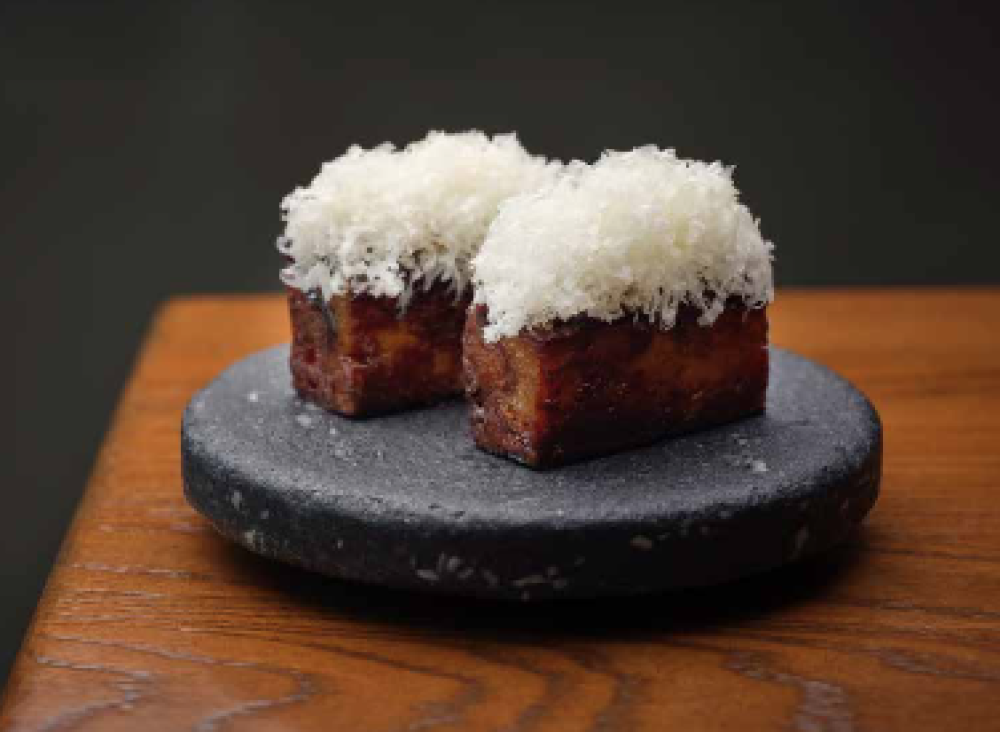
After five years, what’s next? Rogan is not entirely sure. There will be celebrations throughout the year. A series of five special events and collaborations, to be specific, the first of which took place late last month (if we’re being formal, February was when Roganic launched), featuring chef-owner Jorge Vallejo of Mexico City’s Quintonil, ninth on the World’s 50 Best Restaurants 2023 list. The second, hosted just some days ago, brought together Oli Marlow, Roganic’s executive chef, and Kevin Wong, chef-owner of Singapore’s Seroja, for an 11-course dinner.
For now, though, things are good. “It’s a difficult one, Roganic,” Rogan says. “There’s definitely room for improvement. We’ll see how far we can push it into the two-star market, which obviously we would have ambitions for because we believe it’s worth it food-wise. But we’re very happy with where it is in the scheme of things in Hong Kong. It’s really a good-value, well-loved, one-star restaurant, so we don’t want to get too serious.”
Also see: French May Arts Festival, French GourMay Food and Wine Festival starts March 16 – see programme





